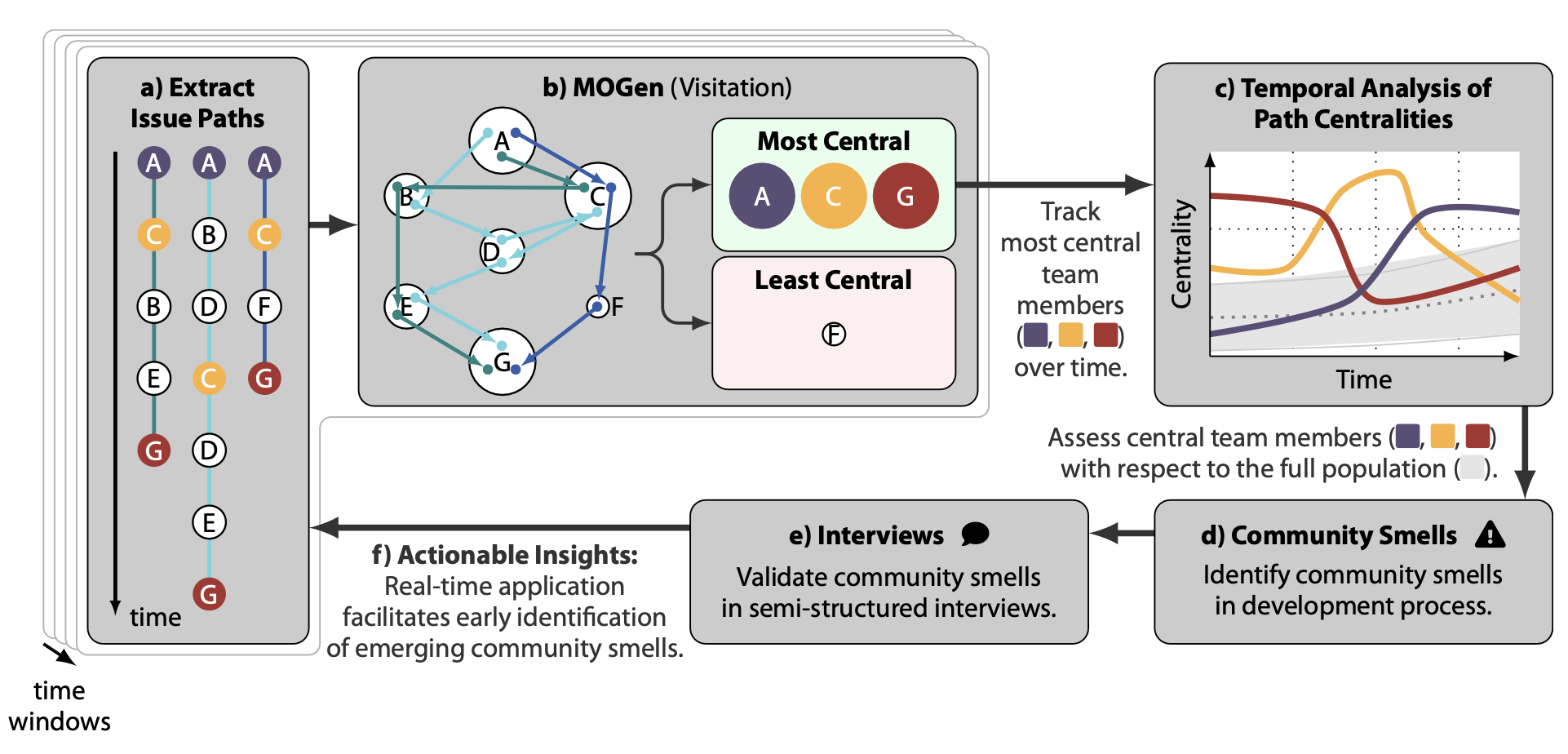Locating Community Smells in Software Development Processes Using Higher-Order Network Centralities
Christoph Gote, Vincenzo Perri, Christian Zingg, Giona Casiraghi, Carsten Arzig, Alexander von Gernler, Frank Schweitzer and Ingo Scholtes
Social Network Analysis and Mining (2023)
Research: Data Science Software Engineering
Abstract
Community smells are negative patterns in software development teams' interactions that impede their ability to successfully create software. Examples are team members working in isolation, lack of communication and collaboration across departments or sub-teams, or areas of the codebase where only a few team members can work on. Current approaches aim to detect community smells by analysing static network representations of software teams' interaction structures. In doing so, they are insufficient to locate community smells within development processes. Extending beyond the capabilities of traditional social network analysis, we show that higher-order network models provide a robust means of revealing such hidden patterns and complex relationships. To this end, we develop a set of centrality measures based on the MOGen higher-order network model and show their effectiveness in predicting influential nodes using five empirical datasets. We then employ these measures for a comprehensive analysis of a product team at the German IT security company genua GmbH, showcasing our method's success in identifying and locating community smells. Specifically, we uncover critical community smells in two areas of the team's development process. Semi-structured interviews with five team members validate our findings: while the team was aware of one community smell and employed measures to address it, it was not aware of the second. This highlights the potential of our approach as a robust tool for identifying and addressing community smells in software development teams. More generally, our work contributes to the social network analysis field with a powerful set of higher-order network centralities that effectively capture community dynamics and indirect relationships.

